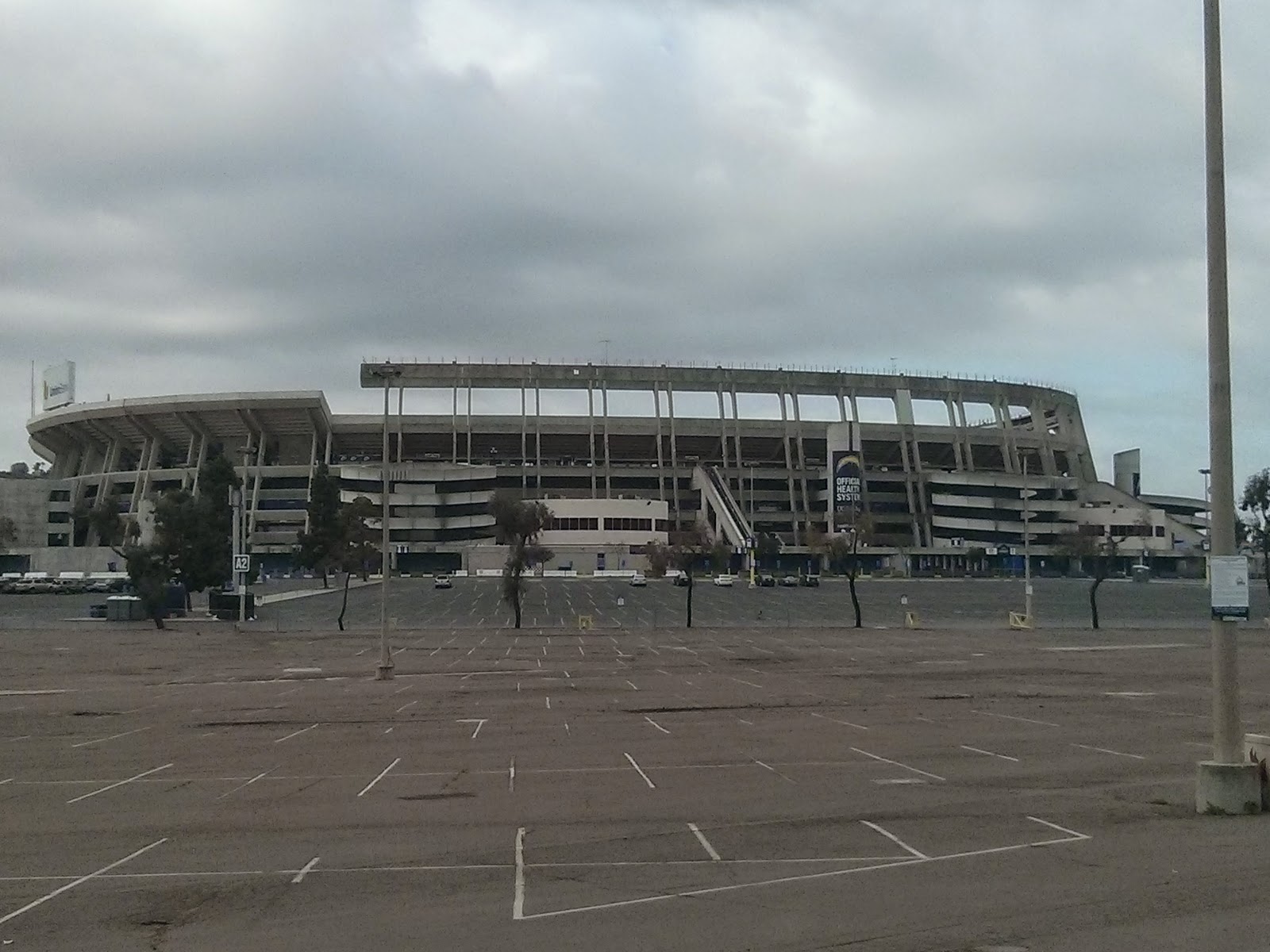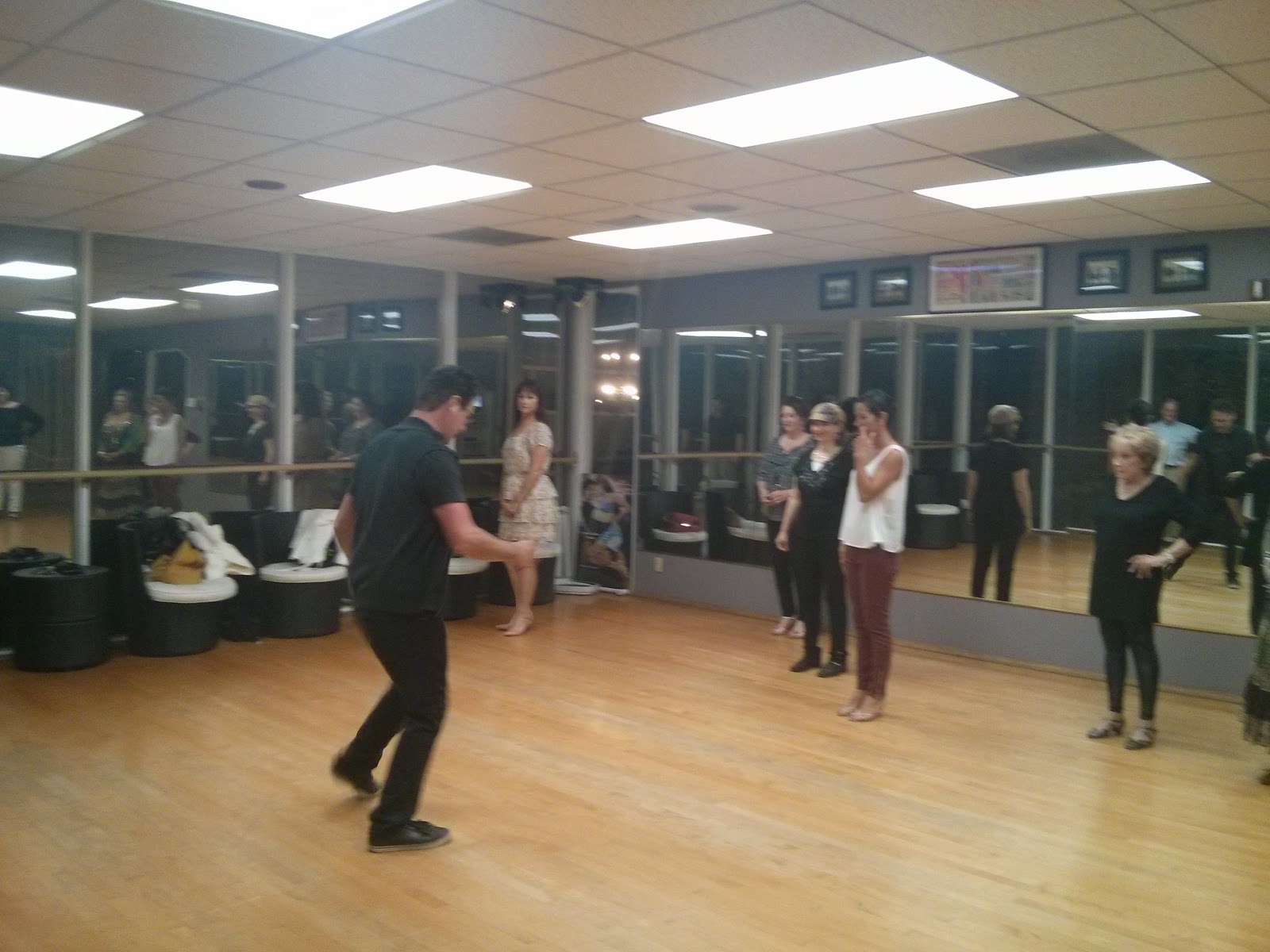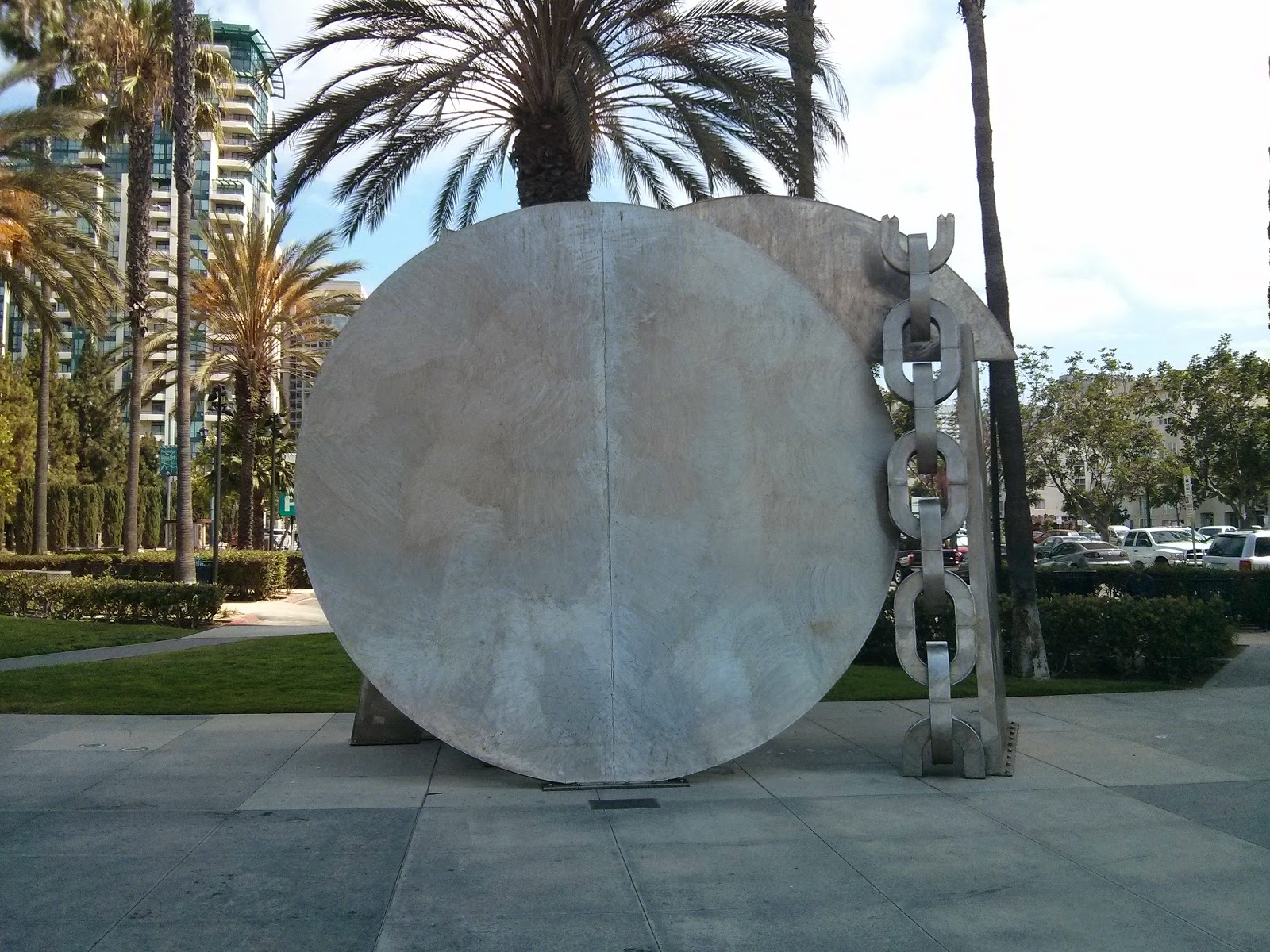Qualcomm stadium is a big part of San Diego's identity but may soon be underutilized and difficult to sell. If a new stadium is approved this will leave a very large stadium facility in the prime location of Mission Valley with only a few feasible options. Most of these options are likely to include destroying the stadium and finding a new use for the prime estate. A few ideas have been floating around.
The movement downtown is anything but certain. MTS’ chief executive, Paul Jablonski, in a letter to the Mayor Kevin Faulkner's task force outlines that building a new stadium is impractical at best and would be nearly 10 years out before completion (2). The proposal is to include an expansion on the convention center and obtain parts of the MTS bus yard.
In the scenario where a new site for the Chargers is settled upon this would leave the old Qualcomm stadium up for grabs. The problem is that there are not a whole lot of entities around San Diego that would have a use for such a stadium making it more likely to be razed to the ground. This would leave a prime development spot right in the mix of upscale Mission Valley.
According to a Fox 5 article Senator Marty Bloc would like to see the stadium redeveloped into a housing community for San Diego State University. Easy access to the trolley would be beneficial for student access to the university (1). The funds for that project have not yet been worked out and university leaders may not bit. The ideas are still in toss up phase.
Traffic has been cited as one of the major concerns. The stadium has received tens of thousands of visitors and has at least two egress points with one leading to the highway and the other leading up a large hill. There is the potential to create new egress points as access restriction is no longer needed when a new use has been found.
A couple of ideas could include:
-Residential: Whether it is student housing or a new residential district reducing the pressure on housing right on a trolley line and near highways is solid use of infrastructure. The blank slate allows for the creation of multi-unit dwellings that maximizes space and neighborhood quality for students or families.
-Refurbishing for Chargers: There is always the possibility of saving some money and refurbishing the stadium for the Chargers by improving on its layout. This would mean there isn't a new stadium downtown and the taxpayers would need to flip less of the construction bill.
-Multi-Use Site: If no one wants to develop such a large site it is possible to sell off sections for different types of buyers. You may end up with a residential area, a business district, and a couple of other uses on the old site.
-Maintain the Stadium for Other Users : The site could be turned into a new race track, a recreation facility or other use. It may be too much upkeep costs for this type of use and its profit potential would be difficult to maximize.
-Manufacturing: The building could be razed and the site sold to a manufacturing facility that would bring new jobs to San Diego. The site would have easy access to highways. A manufacturing site could include autos, prefab housing, recreational crafts, robotics, or other industrial projects.
The blog discusses current affairs and development of national economic and social health through unique idea generation. Consider the blog a type of thought experiment where ideas are generated to be pondered but should never be considered definitive as a final conclusion. It is just a pathway to understanding and one may equally reject as accept ideas as theoretical dribble. New perspectives, new opportunities, for a new generation. “The price of freedom is eternal vigilance.”—Thomas Jefferson
Saturday, February 28, 2015
Friday, February 27, 2015
Egomaniac Bosses Damage The Companies that Employ Them
Poor managers thwart organizational growth and alienate employees. If you have ever worked for a manager with an attitude you might become acutely aware of the damaging impact a personality can have on a department. According to a study in the Academy of Management Journal such mangers are protecting their fragile egos by silencing the suggestions of their employees (Fast, Burris & Bartel, 2014).
Managers with low self-efficacy don't feel that they have the ability to meet new management expectations. They are overwhelmed and concerned about being successful. In order to thwart any criticism of their management style and performance they resort to bullying their employees and tearing them down when possible.
Most people have experienced this at some point in our lives. We expect that out of the thousands of people we meet in a month that a few will be rude, condescending, and aggressive. It is easy to simply ignore them and walk away. Poor managers are much more difficult to deal with as they influence your livelihood.
The workplace creates a captive audience that develops a culture of fear. The inner temper-tantrum throwing child with low emotional intelligence didn't grow up and they are now in charge of assets and people. Organizations that allow such management styles to continue on unchecked will find themselves less competitive.
Not only might employees be miserable, but they may also be bullied into silence and may not be able to contribute to the organization. The manager has effectively choked off new ideas that could have improved the organization. The more this behavior continues the more the organization stands to lose.
They found that this low self-efficacy led to a lack of soliciting input on processes, negative evaluations of employees who did contribute, and a climate of voice aversion. The managers encouraged a culture that lacked a level of innovative spirit and alienated employees. These borders and lack of willing participation in the organizational development process potentially could impact the success of the organization.
Fast, N., Burris, E. & Bartel, C. (2014). Managing to stay in the dark: managerial self-efficacy, ego defensiveness, and the aversion to employee voice. Academy of Management Journal, 57 (4).
Managers with low self-efficacy don't feel that they have the ability to meet new management expectations. They are overwhelmed and concerned about being successful. In order to thwart any criticism of their management style and performance they resort to bullying their employees and tearing them down when possible.
Most people have experienced this at some point in our lives. We expect that out of the thousands of people we meet in a month that a few will be rude, condescending, and aggressive. It is easy to simply ignore them and walk away. Poor managers are much more difficult to deal with as they influence your livelihood.
The workplace creates a captive audience that develops a culture of fear. The inner temper-tantrum throwing child with low emotional intelligence didn't grow up and they are now in charge of assets and people. Organizations that allow such management styles to continue on unchecked will find themselves less competitive.
Not only might employees be miserable, but they may also be bullied into silence and may not be able to contribute to the organization. The manager has effectively choked off new ideas that could have improved the organization. The more this behavior continues the more the organization stands to lose.
They found that this low self-efficacy led to a lack of soliciting input on processes, negative evaluations of employees who did contribute, and a climate of voice aversion. The managers encouraged a culture that lacked a level of innovative spirit and alienated employees. These borders and lack of willing participation in the organizational development process potentially could impact the success of the organization.
Fast, N., Burris, E. & Bartel, C. (2014). Managing to stay in the dark: managerial self-efficacy, ego defensiveness, and the aversion to employee voice. Academy of Management Journal, 57 (4).
Thursday, February 26, 2015
Shakespeare's Rare Book is Coming to San Diego
Shakespeare is coming to town! Thanks to
local universities, the San Diego Commission for Arts and Culture and KPBS
Public Broadcasting the Old Globe Theater in partnership with the San Diego Library
won a bid to bring "First Folio! The Book That Gave Us Shakespeare” to town. It will be the only location in California
where the book will be hosted.
Globe Artistic Director Barry Edelstein elaborates “This volume is one of the most important ever published, and the plays printed in it—the plays that are the lifeblood of The Old Globe—are cornerstones of our language, our worldview, and our very humanity. That we will be able to give San Diegans—and all Californians—a chance to view firsthand the pages on which those plays first appeared is an excitement and an honor.(1)”
The book is one of the most valuable in the country and sold for approximately $5 and $6 million in the past 15 years. Compiled in 1623 by the friends of Shakespeare in after his death it originally sold for $200 (20 shillings) back in the day. With 36 plays are in the folio that include Macbeth, Julius Caesar, Twelfth Night, The Tempest, Antony and Cleopatra, The Comedy of Errors, and As You Like It.
Even though dates have not yet been released you should mark your calendars for the announcement in April of this year. Shakespeare had a profound impact on world thought and culture. Reading and learning from him is important. His plays and poems showed an insight-fulness that much of us still have difficulty deciphering today.
The most profound aspect of Shakespeare was that he was born into modest beginnings and didn’t have much money when he started. Unlike many of his wealthier kinsman he excelled beyond them and created a lasting impact on society. His natural ability mixed with the right circumstances led to gifted greatness.
Supporting San Diego arts and culture helps connect the generations together. Each generation builds off the knowledge of the past and makes a contribution. Understanding the contributions of others like Shakespeare grounds us to the nature of our lives and how words can have profound meanings. Support the growth of culture and knowledge through patronage at the exhibit.
More Information
Globe Artistic Director Barry Edelstein elaborates “This volume is one of the most important ever published, and the plays printed in it—the plays that are the lifeblood of The Old Globe—are cornerstones of our language, our worldview, and our very humanity. That we will be able to give San Diegans—and all Californians—a chance to view firsthand the pages on which those plays first appeared is an excitement and an honor.(1)”
The book is one of the most valuable in the country and sold for approximately $5 and $6 million in the past 15 years. Compiled in 1623 by the friends of Shakespeare in after his death it originally sold for $200 (20 shillings) back in the day. With 36 plays are in the folio that include Macbeth, Julius Caesar, Twelfth Night, The Tempest, Antony and Cleopatra, The Comedy of Errors, and As You Like It.
Even though dates have not yet been released you should mark your calendars for the announcement in April of this year. Shakespeare had a profound impact on world thought and culture. Reading and learning from him is important. His plays and poems showed an insight-fulness that much of us still have difficulty deciphering today.
The most profound aspect of Shakespeare was that he was born into modest beginnings and didn’t have much money when he started. Unlike many of his wealthier kinsman he excelled beyond them and created a lasting impact on society. His natural ability mixed with the right circumstances led to gifted greatness.
Supporting San Diego arts and culture helps connect the generations together. Each generation builds off the knowledge of the past and makes a contribution. Understanding the contributions of others like Shakespeare grounds us to the nature of our lives and how words can have profound meanings. Support the growth of culture and knowledge through patronage at the exhibit.
More Information
Call for Papers: Conference on Sustainable Development in Business Tourism and Sciences at Boston
Dates: 11th to 13th June 2015
Boston, United States of America
Website: http://www.icbtsconference.com/14613191/call-for-paper
Welcome to ICBTS2015 the best workshops for academic researcher Lecturer student in presenting discussion share idea in new research for development our works focus on business marketing finance banking tourism hospitality social science & technology
Welcome to ICBTS2015 the best workshops for academic researcher Lecturer student in presenting discussion share idea in new research for development our works focus on business marketing finance banking tourism hospitality social science & technology
Paper
Submitted to : icbtsconfo@gmail.com
Organized by: IJBTS International Journal of Business Tourism and Applied Sciences
Deadline for abstracts/proposals: 28th February 2015
Protecting San Diego Coasts
| Coastal Days by Murad Abel |
The ocean coastline is one of the most important assets of San Diego and California in general. It is such a popular natural resources that much of San Diego was developed off of this coastline. Warm weather, sunny beaches, and clean coasts draw around 33 million visitors a year, $8.4 billion in spending, and $388 million in taxes annually (1). With such a valuable asset each person has a responsibility to respect and protect the environment.
If you have ever walked on the beach, surfed in the middle of day, threw a line off one of the piers, or sun tanned at the beach you will quickly learn how important this asset really is. A great many people spend hours, some a lifetime, around the beaches and enjoy them to the fullest. An entire culture as developed off of the sand.
You will also notice that the closer you get to the beach the more expensive housing becomes. Areas like La Jolla are in the millions of dollars. People pay a premium to both buy and live near the beach. As you move inland the housing becomes cheaper. The coast has created its own economy with housing, restaurants, events, and outings.
The city does a solid job keeping trash bins empty, enforcing clean up, and encouraging the protection of their most important asset. Despite the cities best efforts it is up to San Diegans, and visitors to keep the coast clean. Each of our actions contribute to the growing pollution problems of our coastline.
According to San Diego Coast Keeper, a non-profit focused on the coastline, a huge percentage of pollution comes from locals (2). Run off from trash, pesticides, animals, etc... can make their way into the water and cause their illness. It is advised not to go into the ocean directly after rain due to the buildup of pollutants that make their way into the ocean.
There are a few things we can do that help to ensure that we are limiting the amount of trash and pollutants in our environment. Seeking environmentally friendly products, recycling, picking up trash, using natural landscape, donating to environmental organizations, and frequenting businesses that support the environment are part of the process. You can always check out some of the environmentally friendly businesses below:
San Diego Government Listings
San Diego Yelp Listings
San Diego Loves Green
Greenopia
US Green Chamber of Commerce
The Picture "Coastal Days" shows a bright sky with puffy clouds. The cliffs, coast, and oceans are bright and eye catching. The picture helps show the beauty and life that exists on the coast and appears to be nearly perfect in environmentally cleanliness. You may purchase the picture in poster form on the Creative Works page or Fine Art America.
Wednesday, February 25, 2015
The Multiple Benefits of Learning Dancing for Fitness and Fun
Dancing is a past time that is fun and can help you lose weight. Many people don't take dancing classes or consider the merits of including this activity in their fitness routines. Beyond helping you lose weight through burning calories it is possible that you may also consider the social benefits of dancing. There are many different types of dancing that range from ballroom to contemporary.
Salsa is one of my favorites because it has lots of flare but also is social by nature. If you ever attended one of the many salsa events in San Diego you would soon come to notice that you can dance with just about anyone you want. People naturally enjoy having conversation in a fun activity.
Dancing also helps you burn calories. Salsa dancing uses a little more energy than many other forms of dancing and one can expect to burn 250 to 500 calories in an hour. The amount is about the same as jogging making it a great alternative to other fitness activities.
Salsa also improves the overall coordination of your body. The more you practice and learn the more enjoyable it becomes. To do this activity well requires learning how to put moves into sequence and follow a timed routine. As you get better at this you will find that your balance and coordination will get better over time.
Dancing can be an extremely social sport that includes classes, events and lots of conversation. Since dancing is typically enjoyed in pairs it provides an opportunity to switch partners and meet new people. If you attend salsa events you will eventually meet many people interested in the same thing.
I have attended a few classes at Champion Ballroom Academy. They have basic and advanced classes for just about all types of dancing. On one of the nights I attended Mary Murphy taught the class. If you know anything about her she was on ABC's So You Think You Can Dance. A very down to earth and warm spirited person. Within an hour I was able to pick up 4 different moves due to the skill of the instructor.
http://www.championballroom.com/home
http://www.marymurphy.tv/
Salsa is one of my favorites because it has lots of flare but also is social by nature. If you ever attended one of the many salsa events in San Diego you would soon come to notice that you can dance with just about anyone you want. People naturally enjoy having conversation in a fun activity.
Dancing also helps you burn calories. Salsa dancing uses a little more energy than many other forms of dancing and one can expect to burn 250 to 500 calories in an hour. The amount is about the same as jogging making it a great alternative to other fitness activities.
Salsa also improves the overall coordination of your body. The more you practice and learn the more enjoyable it becomes. To do this activity well requires learning how to put moves into sequence and follow a timed routine. As you get better at this you will find that your balance and coordination will get better over time.
Dancing can be an extremely social sport that includes classes, events and lots of conversation. Since dancing is typically enjoyed in pairs it provides an opportunity to switch partners and meet new people. If you attend salsa events you will eventually meet many people interested in the same thing.
http://www.championballroom.com/home
http://www.marymurphy.tv/
Using Solar Panels in San Diego Schools to Save Costs and Protect the Environment
The cost of education is going up in San Diego and it
has nothing to do with curriculum. According to an article in UT San Diego the
cost of electricity for public schools in San Diego County bounced to $30
million (1).
Over half of these school districts saw their electricity bills explode to over
43% in the past six months. Officials are upset as the costs are crushing their
budgets and soaking up resources. An evaluation of the long-term nature of this
problem and the possibilities of implementing solar panels is beneficial.
Installing solar panels on the roof and facilities of
San Diego schools is not an impossibility as the idea as it has already been completed
in Orange County Schools. The project costs $17 million dollars and is a 20
year commitment that generates 6.6 million kilowatt hours of solar energy per
year that removes the equivalent of the pollution of 12,000 cars per year from
the environment (Yarbrough,
2010).
The benefits of solar program will need to be
calculated through a thorough feasibility study of the use of energy, the
investment costs of solar panels, and the options for financing to ensure that
it makes sense. If it creates a net positive value for the school district and
the length of the school buildings themselves then it should be a project worth
considering.
The other issue is the use of electricity and whether
or not there are other ways to save on costs. Massachusetts’s School District changed
their lighting, thermostat control, and energy monitoring to save money
(Connell, 2014). The conservation of energy can take a nice bite out of the
cost of running the schools and can lead to tertiary learning about other ways
to improve the schools.
There are no easy solutions but one of the ones that
are most likely are using alternative sources of energy and starting to spark
San Diego into a place where sustainable development is a viable option.
Projects like water desalination and solar panel inclusion help create multiple
sources of resources. Better monitoring and using technology to reduce waste in
those systems further helps the city make it to the next stage of development.
Connell, J. (2014). A massachusetts school district’s
pioneering path to solar. Environmental
Design & Construction, 17 (8).
Yarbrough, S. (2010). Going solar in Orange County
Schools. Sustainable Facility, 35
(1).
Subscribe to:
Posts (Atom)





